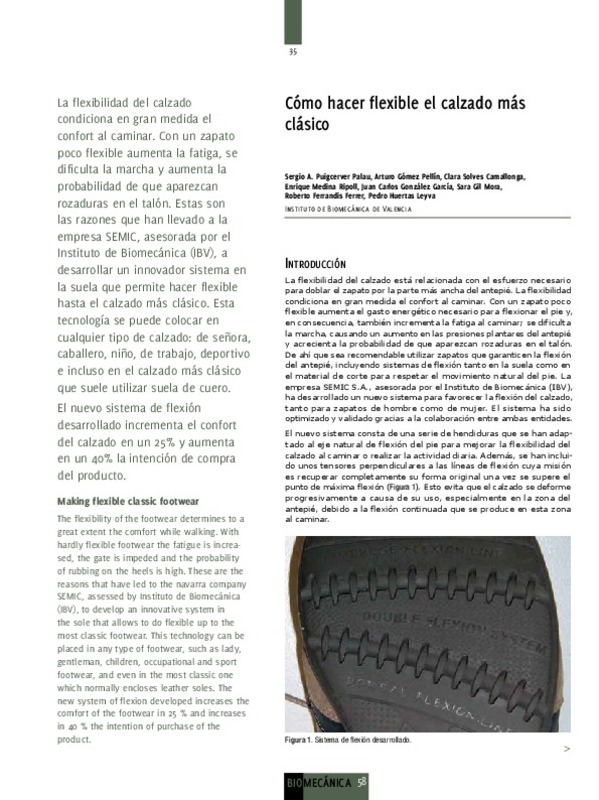JavaScript is disabled for your browser. Some features of this site may not work without it.
Buscar en RiuNet
Listar
Mi cuenta
Estadísticas
Ayuda RiuNet
Admin. UPV
Cómo hacer flexible el calzado más clásico
Mostrar el registro sencillo del ítem
Ficheros en el ítem
| dc.contributor.author | Puigcerver Palau, Sergio Antonio
|
es_ES |
| dc.contributor.author | Gómez Pellín, Arturo
|
es_ES |
| dc.contributor.author | Solves Camallonga, Clara
|
es_ES |
| dc.contributor.author | Medina Ripoll, Enrique
|
es_ES |
| dc.contributor.author | Gonzalez Garcia, Juan Carlos
|
es_ES |
| dc.contributor.author | Gil Mora, Sara
|
es_ES |
| dc.contributor.author | Ferrandis Ferrer, Roberto
|
es_ES |
| dc.contributor.author | Huertas Leyva, Pedro
|
es_ES |
| dc.date.accessioned | 2014-07-01T10:15:46Z | |
| dc.date.available | 2014-07-01T10:15:46Z | |
| dc.date.issued | 2012 | |
| dc.identifier.issn | 1575-5622 | |
| dc.identifier.uri | http://hdl.handle.net/10251/38490 | |
| dc.description.abstract | [EN] The flexibility of the footwear determines to a great extent the comfort while walking. With hardly flexible footwear the fatigue is increased, the gate is impeded and the probability of rubbing on the heels is high. These are the reasons that have led to the navarra company SEMIC, assessed by Instituto de Biomecánica (IBV), to develop an innovative system in the sole that allows to do flexible up to the most classic footwear. This technology can be placed in any type of footwear, such as lady, gentleman, children, occupational and sport footwear, and even in the most classic one which normally encloses leather soles. The new system of flexion developed increases the comfort of the footwear in 25 % and increases in 40 % the intention of purchase of the product. | es_ES |
| dc.description.abstract | [ES] La flexibilidad del calzado condiciona en gran medida el confort al caminar. Con un zapato poco flexible aumenta la fatiga, se dificulta la marcha y aumenta la probabilidad de que aparezcan rozaduras en el talón. Estas son las razones que han llevado a la empresa SEMIC, asesorada por el Instituto de Biomecánica (IBV), a desarrollar un innovador sistema en la suela que permite hacer flexible hasta el calzado más clásico. Esta tecnología se puede colocar en cualquier tipo de calzado: de señora, caballero, niño, de trabajo, deportivo e incluso en el calzado más clásico que suele utilizar suela de cuero. El nuevo sistema de flexión desarrollado incrementa el confort del calzado en un 25% y aumenta en un 40% la intención de compra del producto. | es_ES |
| dc.language | Español | es_ES |
| dc.publisher | Universitat Politècnica de València. Instituto de Biomecánica de Valencia | es_ES |
| dc.relation.ispartof | Revista de biomecánica | es_ES |
| dc.rights | Reserva de todos los derechos | es_ES |
| dc.title | Cómo hacer flexible el calzado más clásico | es_ES |
| dc.title.alternative | Making flexible classic footwear | es_ES |
| dc.type | Artículo | es_ES |
| dc.rights.accessRights | Abierto | es_ES |
| dc.contributor.affiliation | Universitat Politècnica de València. Instituto Universitario Mixto de Biomecánica de Valencia - Institut Universitari Mixt de Biomecànica de València | es_ES |
| dc.description.bibliographicCitation | Puigcerver Palau, SA.; Gomez Pellin, A.; Solves Camallonga, C.; Medina Ripoll, E.; Gonzalez Garcia, JC.; Gil Mora, S.; Ferrandis Ferrer, R.... (2012). Cómo hacer flexible el calzado más clásico. Revista de biomecánica. (58):35-37. http://hdl.handle.net/10251/38490 | es_ES |
| dc.description.accrualMethod | S | es_ES |
| dc.relation.publisherversion | http://www.ibv.org/publicaciones/revista-de-biomecanica | es_ES |
| dc.description.upvformatpinicio | 35 | es_ES |
| dc.description.upvformatpfin | 37 | es_ES |
| dc.type.version | info:eu-repo/semantics/publishedVersion | es_ES |
| dc.description.issue | 58 | es_ES |
| dc.relation.senia | 235586 |






